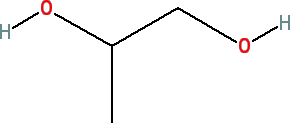Propylene Glycol
Safety Information
In 2012, the Expert Panel for Cosmetic Ingredient Safety reviewed the available literature and safety data for propylene glycol as used in cosmetics and personal care products. They concluded it is safe for use in cosmetic products when formulated to be non-irritating to skin.
The U.S. Food and Drug Administration (FDA) includes propylene glycol on its list of substances considered Generally Recognized As Safe (GRAS) for direct addition to food. It is also permitted by the FDA as an indirect food additive for use as a defoaming agent.
In 2003, the National Toxicology Program’s (NTP) Center for the Evaluation of Risk to Human Reproduction (CERHR) Expert Panel reviewed the reproductive and developmental effects potential of propylene glycol and concluded there is “negligible concern for reproductive or developmental toxicity to humans.”
Propylene glycol is listed on the EU’s Inventory of Cosmetic Ingredients (CosIng) and its use as a cosmetic ingredient is not restricted in any way according to the general provisions of the Cosmetics Regulation of the European Union.
The Joint FAO/WHO Expert Committee on Food Additives (JECFA) recommends a maximum daily oral intake of 25 mg Propylene Glycol/kg body weight/day.
